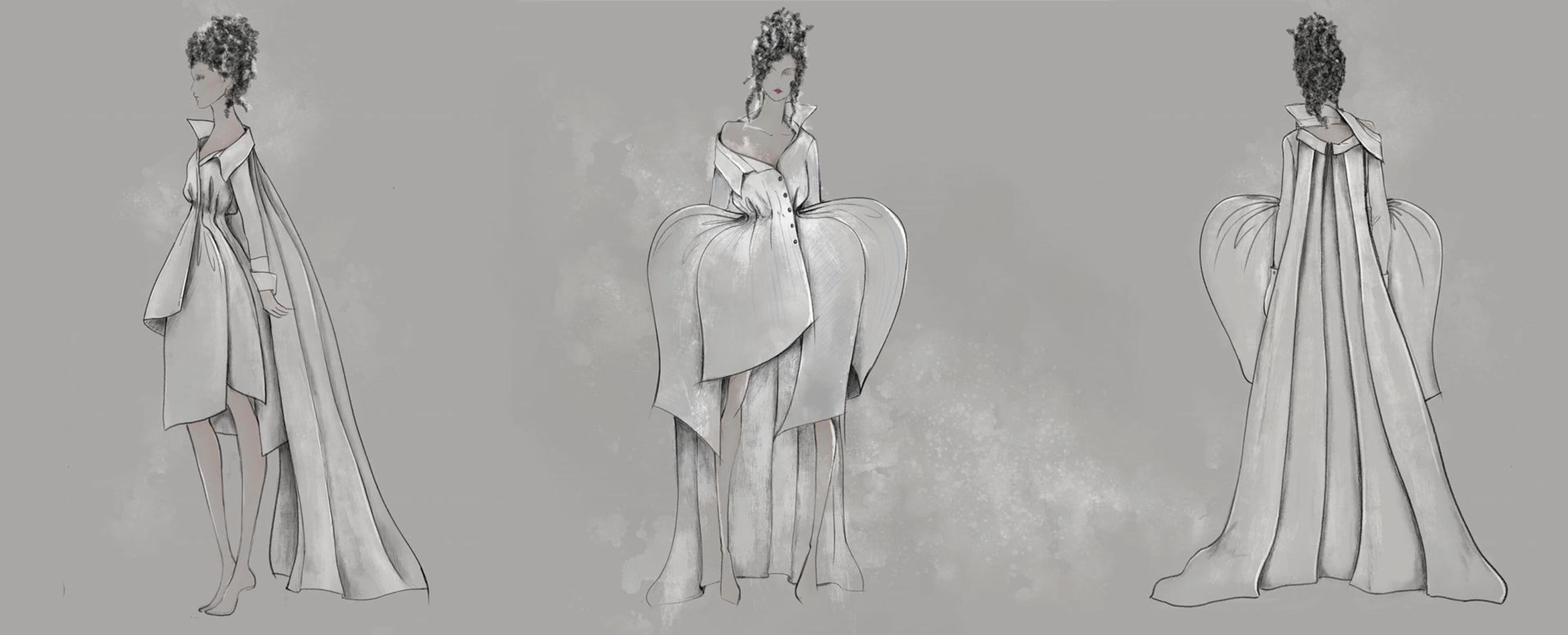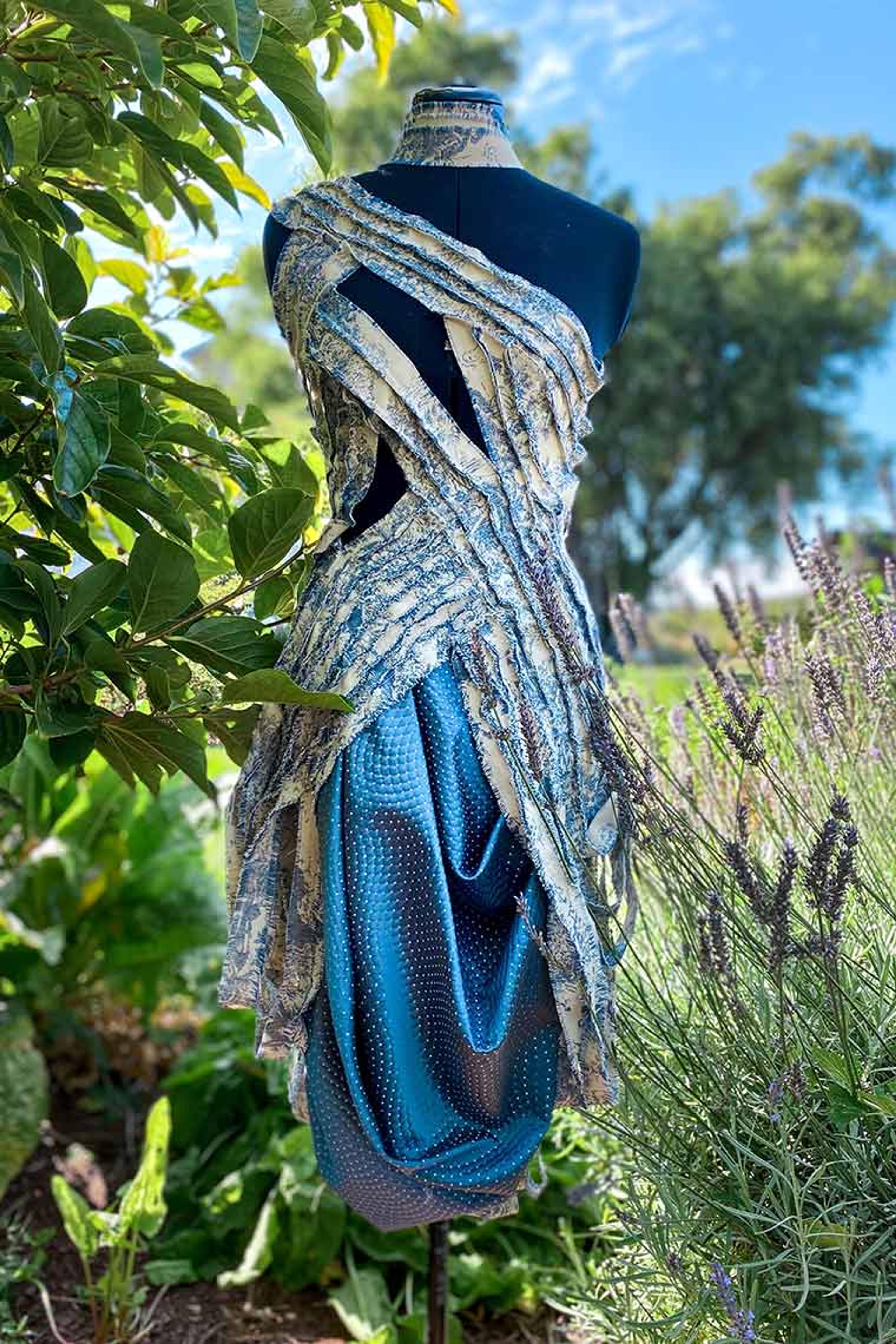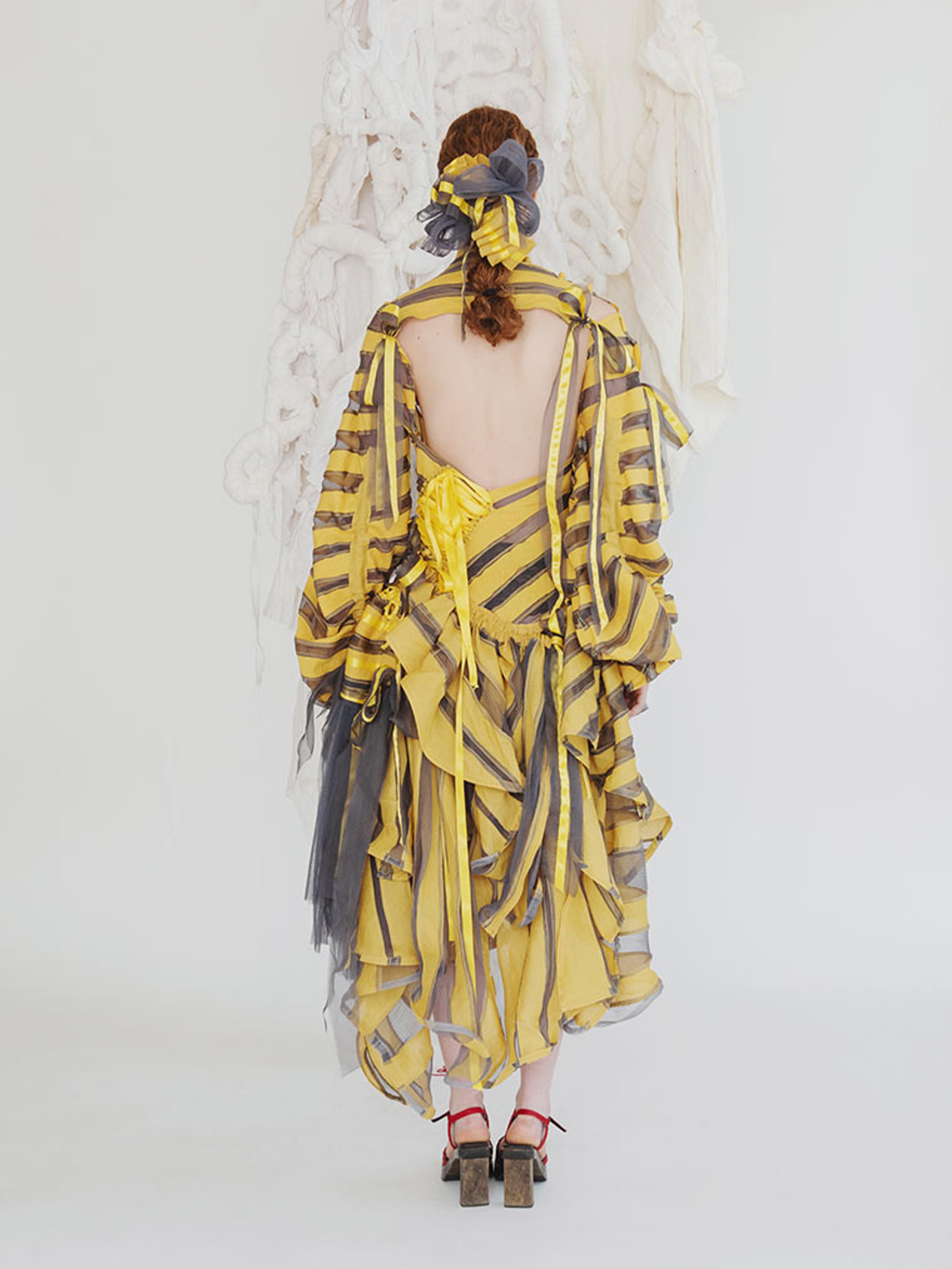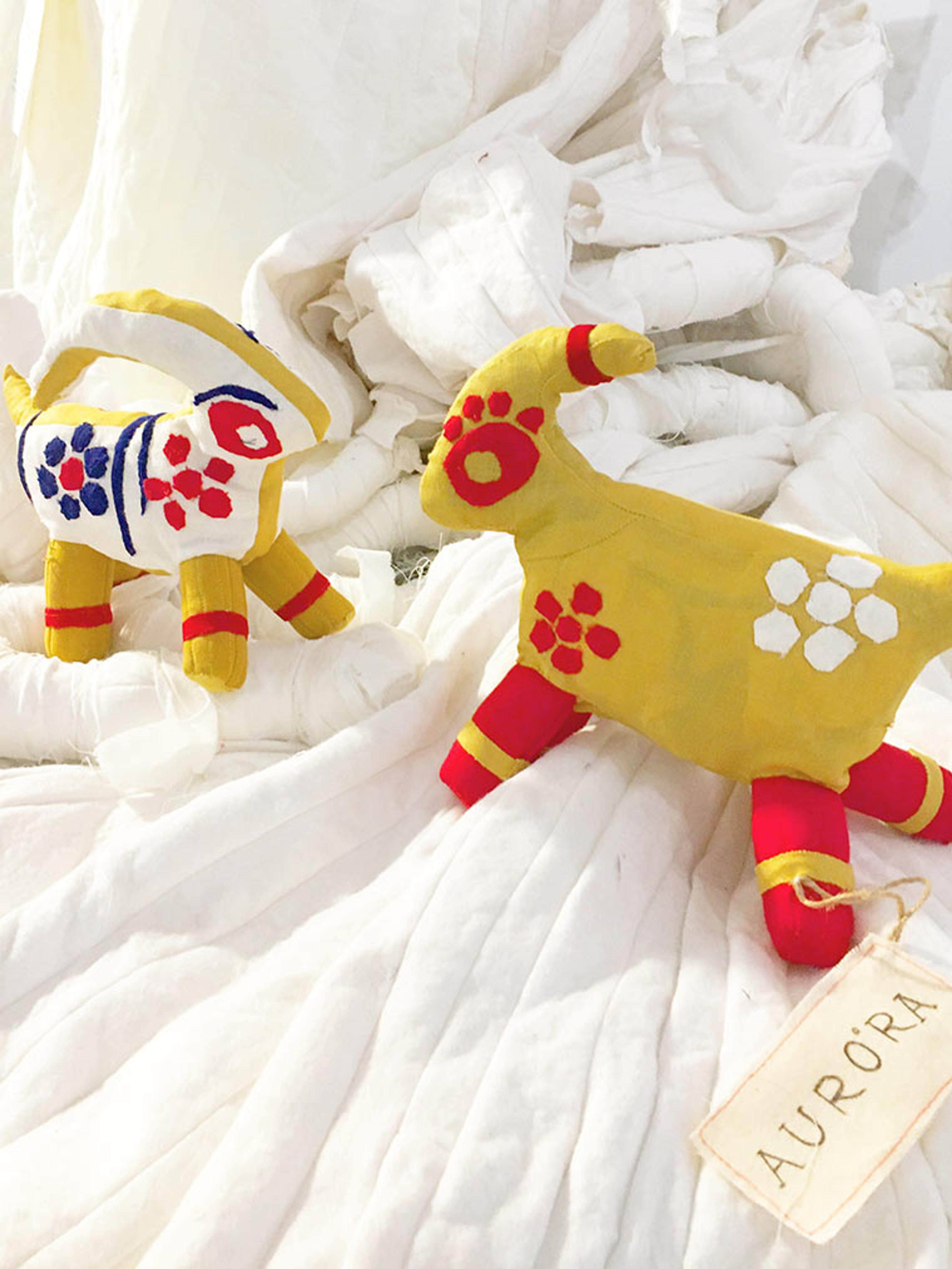Timeless Designs, Timely Interpretations: Celebrating Student Designs

Gallery view of About Time: Fashion and Duration © The Metropolitan Museum of Art
Each spring, students from across the country submit original designs inspired by the year’s Costume Institute exhibition. This year’s Costume Institute College Fashion Design Competition, related to About Time: Fashion and Duration, saw innovative designs combining history, sustainability, and 150 years of fashion into beautiful creations.
Out of dozens of submissions from student designers, one winner and two runners-up were selected as the designers who best conflated the past, present, and future into a single ensemble. This year’s winner was Maryam Almasi, a student at The Fashion Institute of Technology in Manhattan. The runners-up were Parker Spear and Aurora Wilkinson, also from FIT.
Members of The Met Collective, a community of students who work with The Met to promote peer-to-peer engagement with art, talked to the winning designers about their submissions, as well as time, fashion, and … goats.
— The Met Collective
How do you conceptualize time?
Maryam Almasi: Time is a standard that humans created to measure passing moments. But deeper, it’s a relative idea, an illusion. It progresses continuously but it’s also cyclical. Time is an illusion we put ourselves through to measure ourselves and understand our place in the world.
Parker Spear: As a human race, we have conceptualized time into three fixed categories: past, present, and future. To me, time is elusive—it is fluid like water. It shifts and bends and flows.
Aurora Wilkinson: I see time conceptualized by speed. It rushes past you, and then there are those moments that make you stop and look up, that make you think and wonder. Design is an effort to create those moments, to inspire the viewer to slow down momentarily and to see and lock those moments into their minds. The process is the rush, all to create an inspired piece to make time slow down.

Left: Iris Van Herpen (Dutch, born 1984). Dress, fall/winter 2012–13 haute couture. Gift of Iris Van Herpen, in honor of Harold Koda, 2016 (2016.185). Right: Charles James (American [born Great Britain], 1906–1978). Ball Gown, 1951. Gift of the Brooklyn Museum, 2009, Gift of Mr. and Mrs. Robert Coulson, 1964 (2009.300.1311)
How did you understand the exhibition About Time: Fashion and Duration?
Almasi: It disrupts the idea of the linear nature of fashion by juxtaposing similar garments from very different eras. Fashion is always changing and developing new ideas, but it always pulls from the past.
Spear: The exhibition is a celebration of the duration and reinventive nature of fashion throughout time. More specifically, it’s an examination of the relationship between the history of fashion and the future of fashion.
Wilkinson: My understanding is that it’s just a really great opportunity to honor a lot of inspiration from past designers. Also, it’s an opportunity to highlight craftsmanship.

Almasi’s winning design. Images courtesy of Maryam Almasi
How did you incorporate the conception of the exhibition into your creative process?
Almasi: I wanted to create a casual dress for our era, and I looked to past casual dresses to influence my design. I wanted to create something distinctly new but that also references what came before.
Spear: The inspiration behind my design is an admiration of art and craft. Specifically, the relationship that exists between art or craft and the viewer. My design reflects the mindset of the nineteenth-century Arts and Crafts Movement: that clothing should be more naturalistic, flowing, and handcrafted.
Handmade or handcrafted techniques are being lost in the cycle of fashion and are now considered couture due to the time and skill needed to achieve them. From the beginning of the human race and throughout life as we know it, art and craft have always been the defining attributes of many different cultures that have existed.
Wilkinson: When creating my design, I spent a lot of time remembering the craftsmanship of designers and how much time goes into creating designs that are beautiful and exciting on the outside. I made a point to take my time and make something that looks beautiful on both sides of the fabric. The textiles I created are double-sided and finished really nicely. So I suppose for me that was one of the main things I was looking at with other designers: just their intention to make really beautiful pieces of art.


Two views of Spear’s design. Images courtesy of Parker Spear
What do you hope for the future of the fashion?
Almasi: The future of fashion will have to be sustainable, so I strive to create things that are more than beautiful; they’re also sustainable. I try to tell stories with what I create.
Spear: The overarching changes I want to see in the fashion industry is for more companies that are conscious and sustainable to be at the forefront of fashion, and to do away with classism.
Wilkinson: I think a good thing about the fashion industry is that it’s always changing. I definitely hope to see it generally take a more climate-conscious route. I saved every piece I cut while sewing to make recycled toy goaties and other home goods. In this way, there is a continuation of life and knowledge that the garment wasn’t harmful to the Earth.


Wilkinson’s design and two of the goats she made from the excess materials. Images courtesy of Aurora Wilkinson
What is your favorite period of time, design-wise?
Almasi: It is really difficult to pick one specific era, but currently I am preoccupied with post-crisis eras in general. The times such as the post-World War eras are most relatable to our current situation. I believe they reflect a great deal about our resilience and hope for the future.
Spear: My favorite period changes often. At the moment, my favorite period is the Parisian Bohemia of the 1910s and ’20s. The period consisted of multiple cultures and facets of society, including the bohemian-type society and the eccentric upper-class world of deadpan, old-money socialites. Think: dimly lit, underground, cave-like rooms with circular ceilings, rugs, and pillows, incense and smoke clouding the air, swing music filling the room.
Wilkinson: This is hard to answer; I feel like every design period is so interesting. Since fashion is generally a reflection of what’s happening at a time or location even just changing the hemlines or changing ideas of the way women dress can be considered cultural, political, or even revolutionary. Fashion periods are all so unique; I just love them all.

Left: Gabrielle Chanel (French, 1883–1971). Suit, spring/summer 1963 haute couture. Gift of the Brooklyn Museum, 2009, Gift of Jane Holzer, 1977 (2009.300.525a–c). Right: Karl Lagerfeld (French [born Germany], 1933–2019) for House of Chanel (French, founded 1913). Suit, spring/summer 1994. Courtesy of CHANEL Patrimoine Collection, Paris
* * *
Congratulations to Maryam, Parker, and Aurora, and to all the student designers who participated in this year’s competition! Get in touch with your own sense of inspiration and experience About Time: Fashion and Duration virtually on The Met’s website.
* * *
This interview has been edited and condensed for publication.
The student design competition is made possible by the Doris & Stanley Tananbaum Foundation in memory of Doris Tananbaum.
Leon Christian
Leon Christian is a member of the Met Collective.
Sven Larsen
Sven Larsen is a member of the Met Collective.
Niles Marthone
Niles Marthone is a member of the Met Collective.
Samantha Santana
Samantha Santana is a member of the Met Collective.
Chloe Lovelace
Chloe Lovelace is a program coordinator in the Education Department.